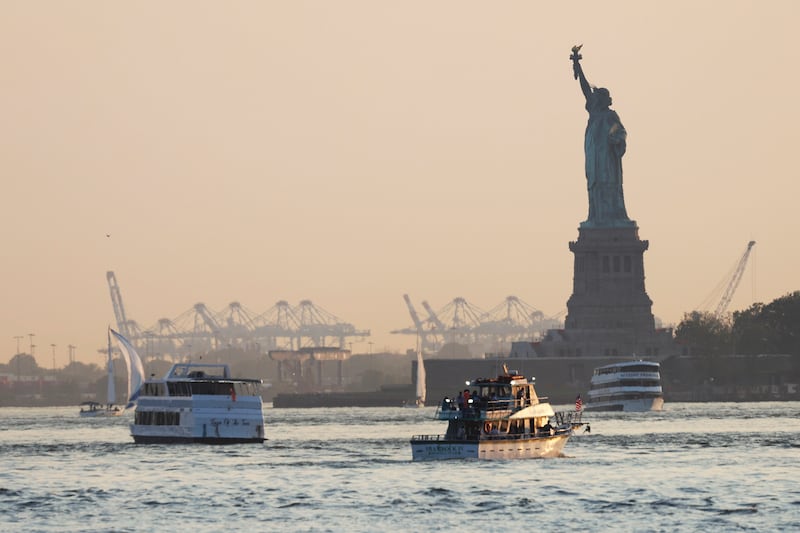- Over 7.8 million acres have burned in Canada, surpassing the country's 25-year average (7.3 million) for land fire damage.
- There are 225 active wildfires in Canada, and 116 of these are deemed "out of control."
- Wildfire smoke from Canada has deteriorated air quality in the U.S. and traveled as far as Europe and central Russia.
It’s still early in the traditional fire season and wildfires in Canada are burning across the land faster than any other year except for 2023.
So far this year, more than 7.8 million acres have burned, which is close to the size of the state of Maryland. This season has already passed the annual average.
The 25-year average of land burned in Canada in a season is 7.3 million acres, according to data from the Canadian Interagency Forest Fire Center. In 2023, a record was set with over 40 million acres burned and this year’s total is set to be well above normal.
It’s not just the fires themselves that are causing issues, but the smoke has reached into the U.S. causing air quality issues and has even made its way across the Atlantic.
There are currently 225 active fires burning across Canada, according to the Canadian Interagency Forest Fire Center.
Most of the fires are out of control
Of the 225 active wildfires in Canada, 116 are out of control, 27 are being held and 82 are under control.
Canada currently has multiple massive active fires greater than 250,000 acres burning in five provinces.
The country’s largest fire is the Shoe Fire, burning in central Saskatchewan 100 miles north of Saskatoon, The Washington Post reported. That fire is now over 1.2 million acres in size and has prompted evacuations in 33 rural communities.
British Columbia currently has two massive out-of-control fires among the 86 active fires within the province, per The Washington Post. One of the fires in the far north part of the province is getting close to reaching 500,000 acres. Another rapidly growing fire has led to evacuations for rural Indigenous First Nations regions.
In Alberta, there are 60 active fires and five of them are over 120,000 acres. The province’s largest fire was started by lightning north of Edmonton and had grown past 320,000 acres earlier this week.
There are five fires in Manitoba that are greater than 120,000 acres and are out of control, and the largest is over 740,000 acres. Because of increased moisture, the growth of the larger fires has slowed significantly.
Ontario’s largest fire is over 370,000 acres and there are multiple wildfires burning in the southwest area of the province. The region’s fires have also been subdued by wetter conditions recently, per The Washington Post.
Rain is forecast near some of the Canadian fires this weekend and into next week, which will hopefully help contain the blazes more.
How far has the smoke traveled?

As the smoke has caused air quality issues across Canada as well as in the Midwest and Eastern United States it’s also made its way across the Atlantic Ocean.
According to The Washington Post, this week a plume of smoke from the fires has caused hazy skies in Europe. As of Wednesday morning the smoke had traveled around 6,000 miles from its origin to central parts of Russia.
Another round of smoke may be prevented from filling European skies next week thanks to a high-pressure system forming near Western Europe.
The layer of smoke in the atmosphere has caused typically blue skies to have an orange or milk-white hue, and it also changes the appearance of the sun.
“The change in the appearance of the sun and sky is due to smoke particles in the atmosphere scattering the blue wavelengths of light more, allowing predominantly orange and red hues to reach our eyes,” per BBC Weather.


